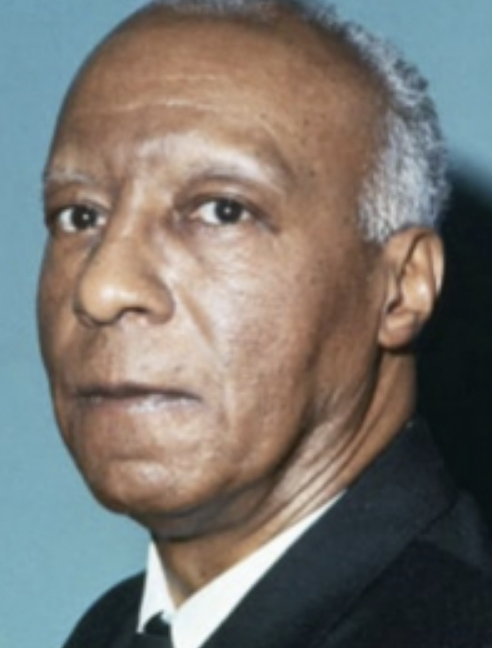On this date in 1889, labor organizer, civil rights activist and journal editor Asa Philip Randolph was born in Crescent City, Florida, to parents James and Elizabeth (Robinson) Randolph. Growing up in Jacksonville, Randolph’s intellectual curiosity was shaped by his father, who, though a Methodist minister, encouraged him and his brother James to read freethought works. Through fireside debates about the existence of God with James and father, Randolph found that no logical conclusion of the affirmative or negative could be reached.
After high school he held a series of jobs, but facing discrimination, moved to New York City in 1911 to pursue an acting career, helping to establish the Shakespeare Society in Harlem and playing several title roles. When his parents disapproved of his acting career, Randolph enrolled at City College of New York in 1911, studying literature and sociology. Although he did not complete his degree, his political philosophy influenced his civil rights activism. Randolph believed that the root of racism was economic inequality. He began public speaking and founded the radical black magazine The Messenger in 1917.
Randolph went on to organize a union of New York City elevator operators and Virginia shipyard workers as president of the National Brotherhood of Workers of America. One of his greatest achievements was organizing the Brotherhood of Sleeping Car Porters (BSCP) in 1925, which became the nation’s first all-black union. The U.S. government named him one of the “most dangerous Negroes” in America as a result of his outspokenness. Traveling around the country to establish new union chapters, Randolph became a skilled orator, speaking out to end Pullman Company’s unfair treatment of black railroad employees.
In 1941, Randolph planned a march on Washington to protest employment discrimination and segregation of the armed forces. Though the march wasn’t held, it helped spur passage of the Fair Employment Act. When President Truman called for a peacetime draft in 1947, Randolph continued to pioneer nonviolent civil disobedience, again threatening a march on Washington. This led to an executive order, which finally ended racial segregation in the U.S. military.
In the 1950s he allied with Martin Luther King Jr. With MLK’s assistance in 1957, Randolph orchestrated a prayer pilgrimage to Washington to peacefully demand that Southern schools comply with the Brown v. Board of Education Supreme Court decision ordering school integration. Randolph was a chief organizer of the 1963 March on Washington for Jobs and Freedom. An event typically considered the pinnacle of the civil rights movement, the march was attended by 250,000 people. It created momentum leading to passage of the 1964 Civil Rights Act and the 1965 Voting Rights Act.
At age 74 he introduced MLK’s famous “I Have a Dream” speech, saying of the event, “This is the most beautiful day of my life.” (A. Philip Randolph: A Biographical Portrait by Jervis Anderson.) In 1964 he received the Presidential Medal of Freedom. Soon after, he founded the A. Philip Randolph Institute to study and ameliorate the causes of poverty, appearing at the White House in 1966 to propose a solution he termed the “Freedom Budget.”
Although he recognized the power of using religious rhetoric to motivate people to take action, Randolph’s secular humanist philosophy rankled some leaders of the civil rights movement. The American Humanist Association named him Humanist of the Year in 1970. He signed a public declaration of humanist principles, the Humanist Manifesto II, in 1973. Randolph married Lucille Campbell Green in 1913. (D. 1979)


